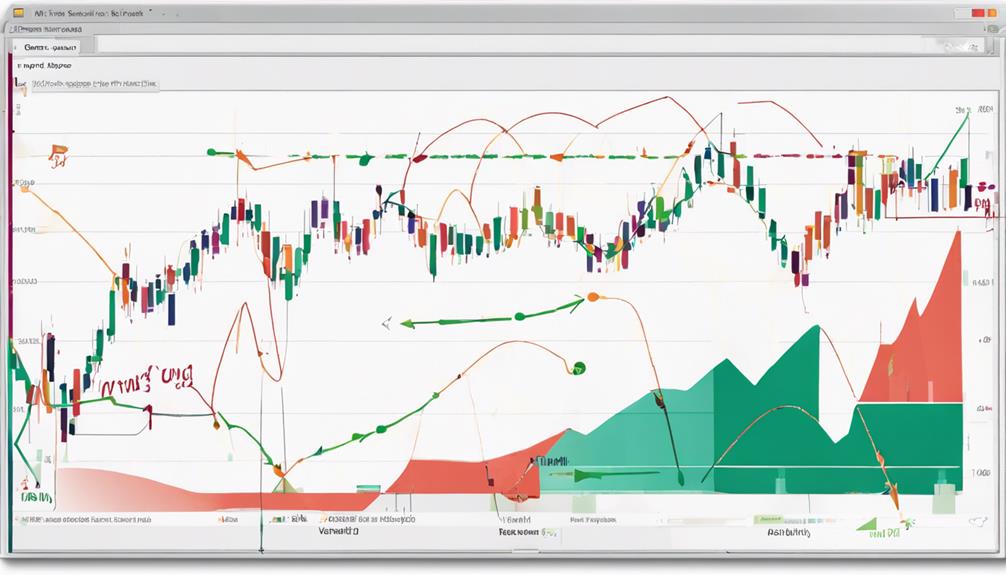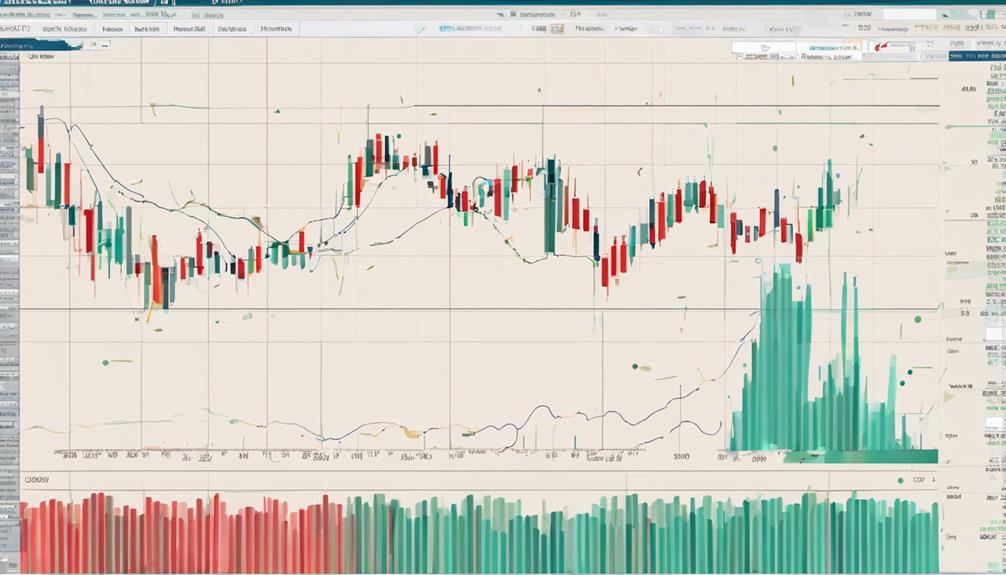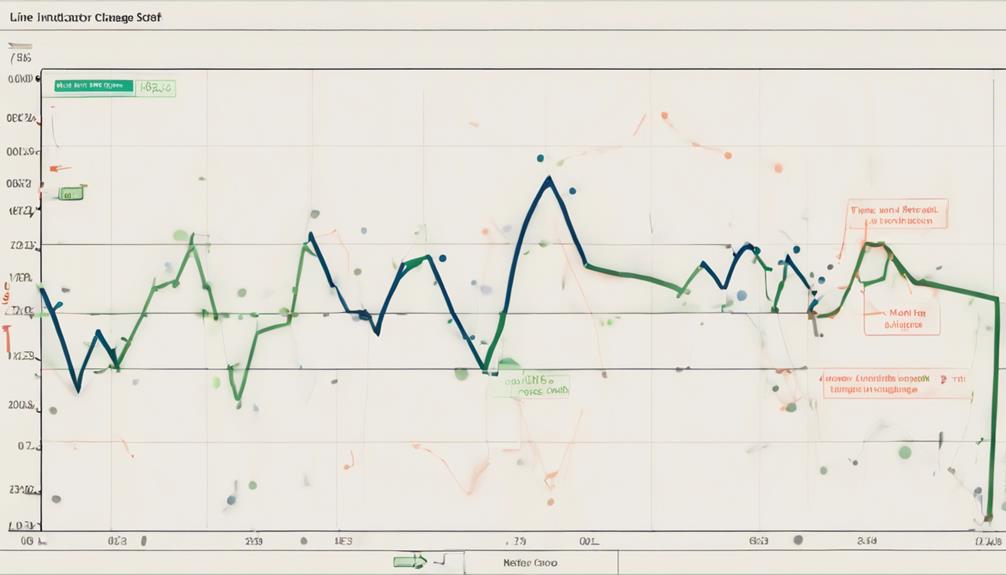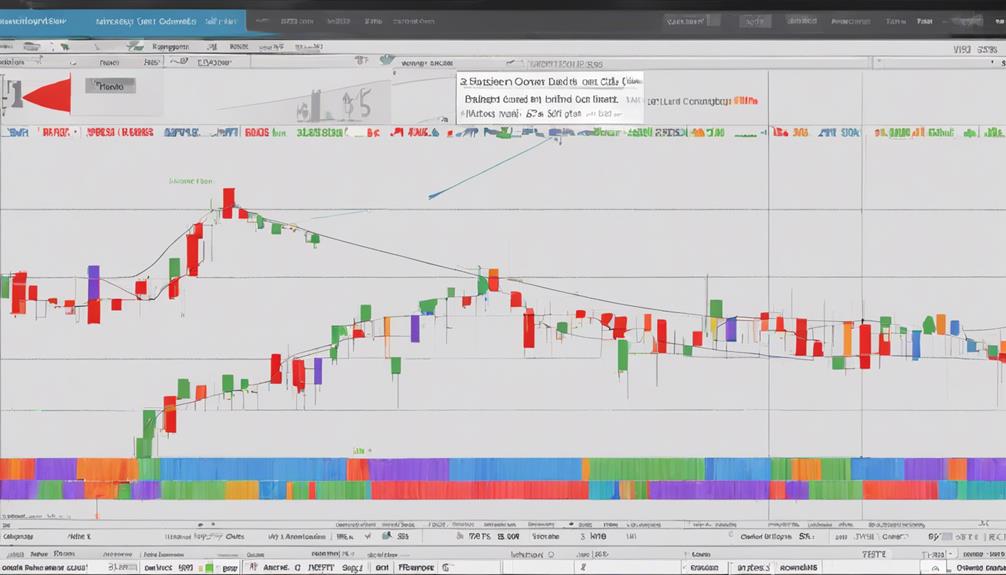The CMF indicator serves as a valuable tool in market trend analysis, shedding light on the intricate dynamics of capital flow within securities.
Its ability to discern between buying and selling pressures offers traders a nuanced perspective on market sentiment.
By leveraging CMF, traders can navigate the complexities of market trends with more precision, gaining insights that go beyond surface-level price movements.
Understanding how CMF interacts with various market conditions can empower traders to make informed decisions, potentially enhancing their strategies and outcomes in the ever-evolving landscape of financial markets.
Importance of CMF in Trend Analysis
The utilization of the Chaikin Money Flow (CMF) indicator plays a crucial role in market trend analysis by offering in-depth insights into the accumulation and distribution dynamics of stocks. This technical indicator, developed by Marc Chaikin, focuses on the flow of money into or out of a security.
By analyzing the volume-weighted accumulation and distribution, CMF helps traders assess the buying pressure in the market. Understanding the Chaikin Money Flow is essential in determining the strength and direction of trends, as it provides a quantitative measure of the relationship between price and volume.
Traders use CMF to confirm trend directions and identify potential trading opportunities based on the indicator's signals. Monitoring CMF values helps traders gauge the momentum behind price movements, with positive values above the zero line indicating market strength and negative values below the line signaling weakness in the trend.
In essence, the Chaikin Money Flow indicator is a valuable tool for traders seeking to interpret market dynamics and make informed trading decisions.
Interpreting CMF Values Effectively

Interpreting CMF values effectively is essential in gauging market strength and identifying potential trading opportunities based on accumulation and distribution dynamics. When interpreting CMF values, consider the following:
- Positive vs. Negative Values: Positive CMF values above zero indicate market strength and a bullish trend, while negative values below zero suggest weakness and a bearish trend.
- Relationship with Price and Volume: Positive CMF with price above the midpoint and increasing volume confirms a bullish trend, while negative CMF indicates a bearish trend.
- Identifying Potential Trading Opportunities: Higher highs in overbought zones with lower highs in CMF signal a potential sell opportunity, while lower lows in oversold zones with higher lows in CMF indicate a possible buy opportunity.
- Accumulation vs. Distribution: The proximity of closing prices to the high or low can help interpret accumulation or distribution, influencing CMF values for trend analysis.
- Enhancing Analysis: Utilizing CMF alongside trend lines, support/resistance levels, and other technical indicators can enhance market trend analysis accuracy and decision-making.
Utilizing CMF for Trend Strength Assessment

Utilizing the CMF indicator for assessing trend strength provides valuable insights into market dynamics and potential trading opportunities. The Chaikin Money Flow indicator, by analyzing the money flow multiplier, helps traders gauge the buying or selling pressure behind price action. Positive CMF values above the zero line indicate a strong market sentiment, while negative values below suggest weakness in the market trend. When used in conjunction with trend lines, CMF can confirm breakout directions and the strength of a trend.
Moreover, traders can identify potential trading signals using CMF. Sell signals may occur when there is a higher high in overbought zones alongside a lower high in CMF, signaling a potential reversal in the trend. Conversely, buy signals can be generated when there is a lower low in oversold zones with a higher low in CMF, indicating a possible trend reversal. By incorporating CMF into technical analysis, traders can better assess the strength of a trend and make informed trading decisions.
Identifying Potential Market Direction Changes

In assessing market dynamics, identifying potential changes in market direction is crucial for traders seeking to make informed decisions. When using the Chaikin Money Flow (CMF) indicator for this purpose, traders focus on specific aspects to gauge potential market shifts. Here are key considerations:
- CMF analyzes the proximity of closing prices to highs and lows, indicating potential changes in price trends.
- Positive CMF values above the zero line suggest market strength and buying pressure, potentially signaling an uptrend.
- Negative CMF values below the zero line imply market weakness and selling pressure, indicating a possible downtrend.
- CMF can confirm trend direction changes and offer insights into shifts in market sentiment, aiding in decision-making.
- Traders often combine CMF with other technical indicators to validate potential market trend reversals effectively.
How Does the Advance Decline Line Compare to the CMF Indicator in Market Trend Analysis?
When it comes to market trend analysis, the advance decline line and the CMF indicator serve different purposes. The advance decline line measures the market breadth by tracking the number of advancing and declining stocks. Meanwhile, the CMF indicator focuses on buying and selling pressure. Both are important for accurate advance decline line market prediction.
How Does the CMF Indicator and Advance Decline Line Work Together in Market Trend Analysis?
The CMF indicator and advance decline line prediction work together in market trend analysis by providing complementary signals. The CMF measures buying and selling pressure, while the advance decline line predicts market direction based on the number of advancing and declining stocks. Together, they offer a comprehensive view of market momentum.
Incorporating CMF Into Trading Strategies

Incorporation of the Chaikin Money Flow (CMF) indicator into trading strategies enhances the precision of trend identification and momentum evaluation. Traders use CMF, developed by Marc Chaikin, to measure buying and selling pressures in the market.
By analyzing the relationship between closing prices and highs/lows, CMF can help traders identify potential trend reversals and confirm breakout directions. Additionally, CMF signals can be used to validate support/resistance levels and provide additional insights into market strength or weakness.
Utilizing CMF can assist traders in pinpointing optimal entry or exit points, especially when combined with other technical indicators like the exponential moving average (EMA). When CMF values are rising in oversold zones, it signals potential buy opportunities, whereas falling CMF values in overbought zones indicate potential sell signals.
Moreover, CMF can help traders identify divergences between price movements and the money flow, aiding in making informed trading decisions.
Frequently Asked Questions
Is CMF a Good Indicator?
CMF is a valuable indicator for assessing market strength based on accumulation and distribution levels. Its range of +1 to -1 offers insights into buying and selling pressure, aiding in trend confirmation, reversal identification, and trade decisions.
What Is the CMF Strategy in Trading?
The CMF strategy in trading involves analyzing price and CMF indicator divergences to signal potential trades. Traders use this method to assess buying and selling pressure, confirm trends, and identify potential reversals in the market.
Is Chaikin Money Flow a Good Indicator?
Chaikin Money Flow (CMF) is a valuable indicator in market analysis, offering insights into buying/selling pressure. When used effectively, it complements other tools, enhancing decision-making. However, like any indicator, its reliability depends on context and proper interpretation.
How Do You Use an Accumulation Distribution Indicator?
To use an Accumulation Distribution Indicator effectively, analyze the flow of money in and out of a security by interpreting high values as buying pressure and low values as selling pressure. This aids in identifying potential trend reversals and confirming trends from other technical indicators.
Conclusion
In conclusion, the Chaikin Money Flow (CMF) indicator serves as a valuable tool in market trend analysis, providing insights into the flow of money in and out of securities.
By interpreting CMF values effectively and utilizing it for trend strength assessment, traders can identify potential market direction changes and incorporate CMF into their trading strategies.
Just as a compass guides a traveler through uncharted territory, CMF guides traders through the complex and ever-changing landscape of the financial markets.
